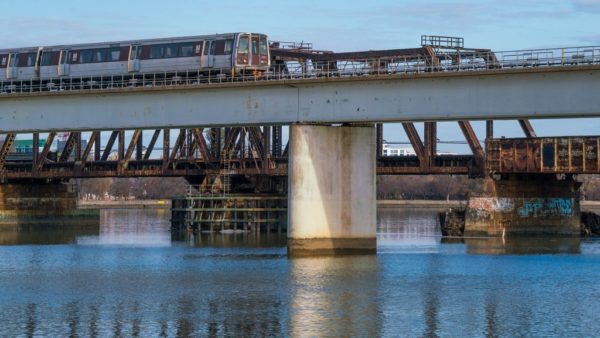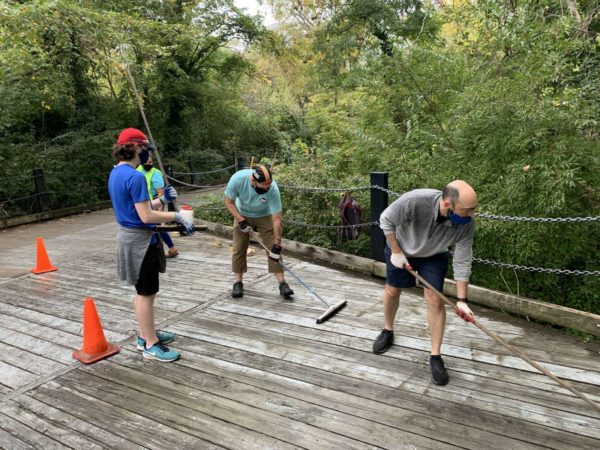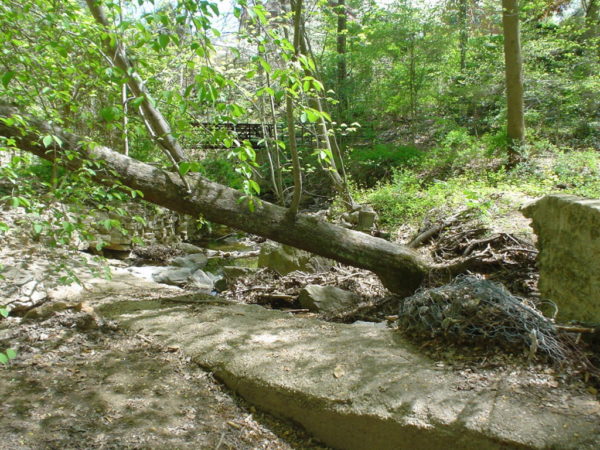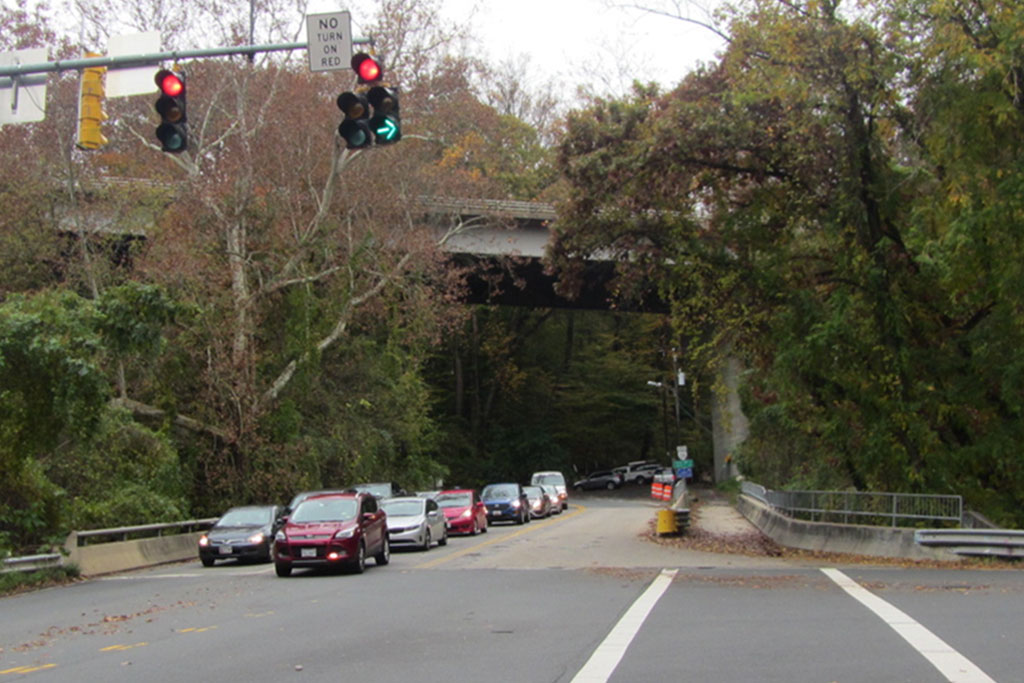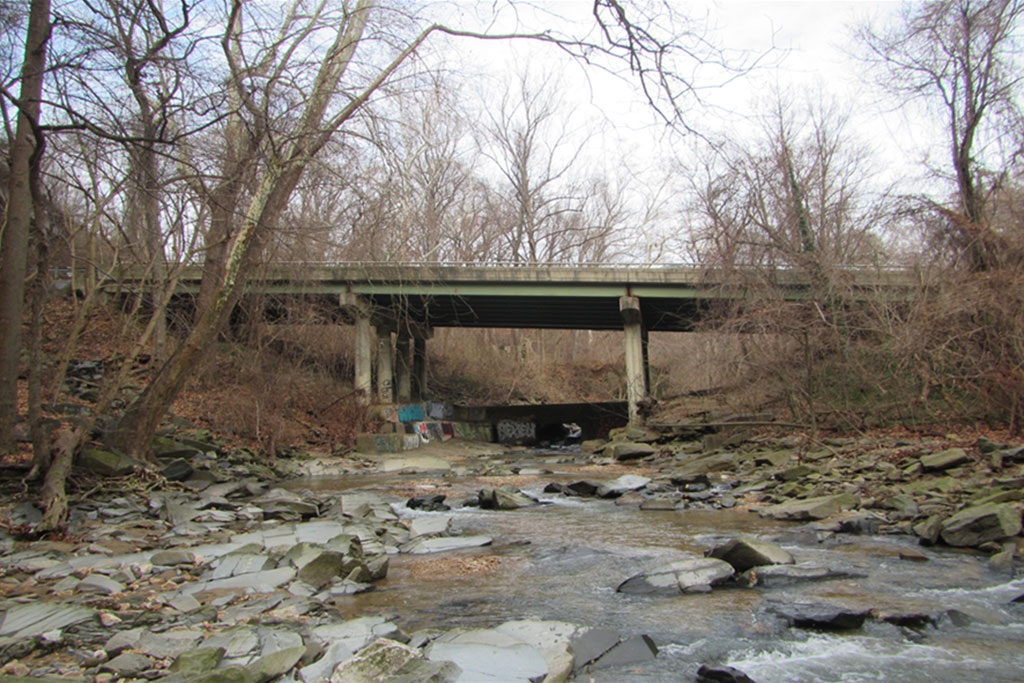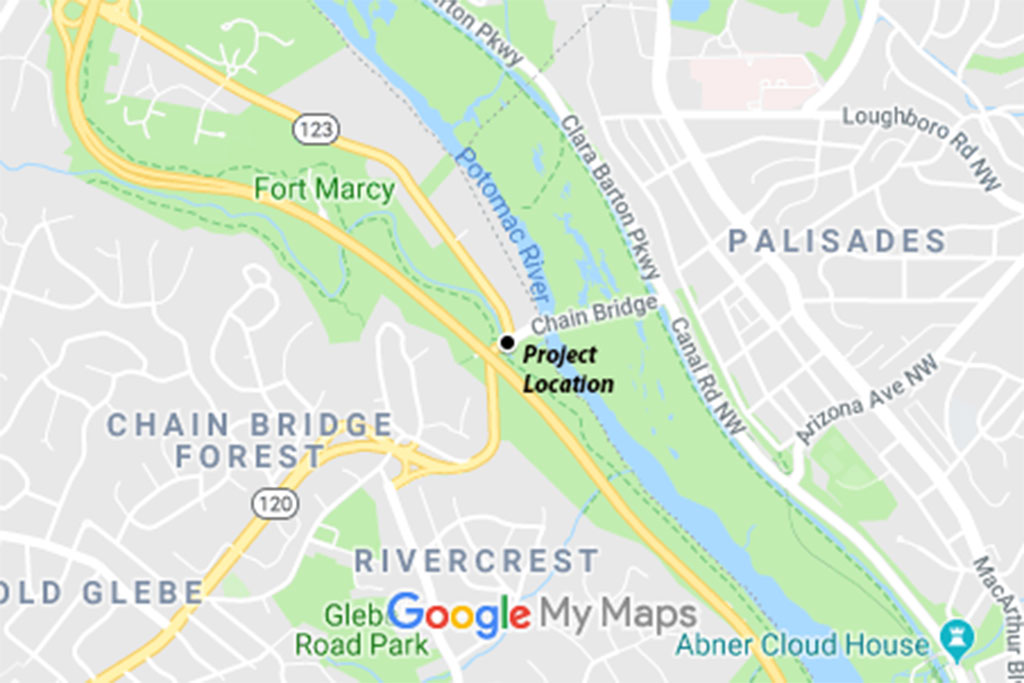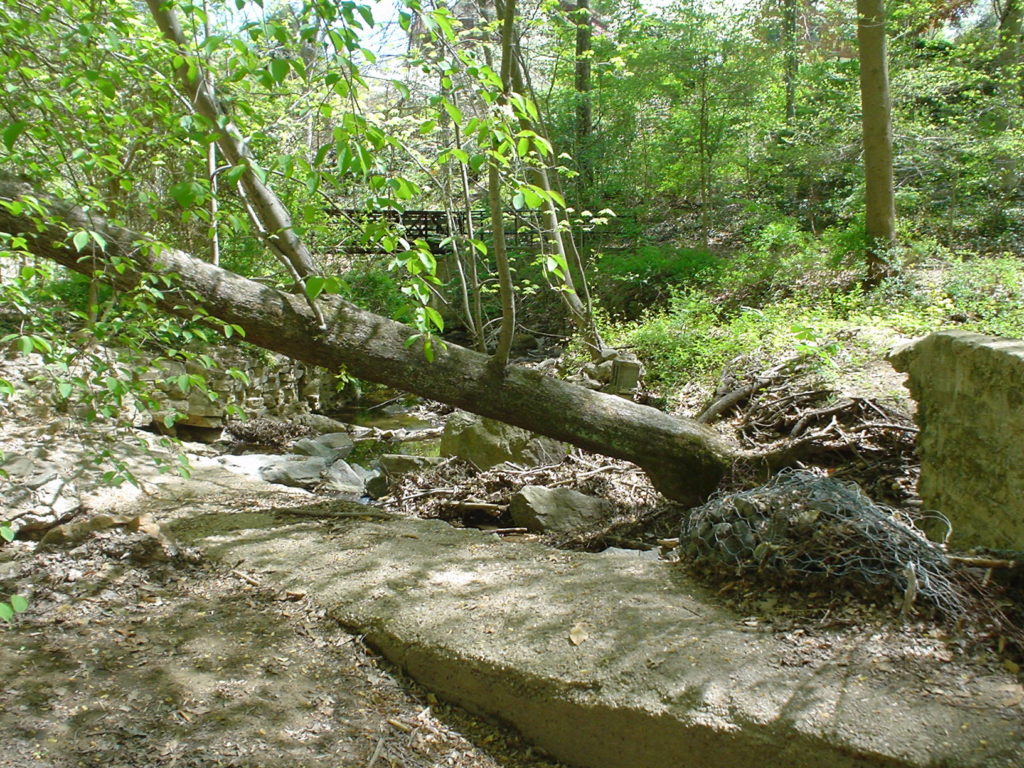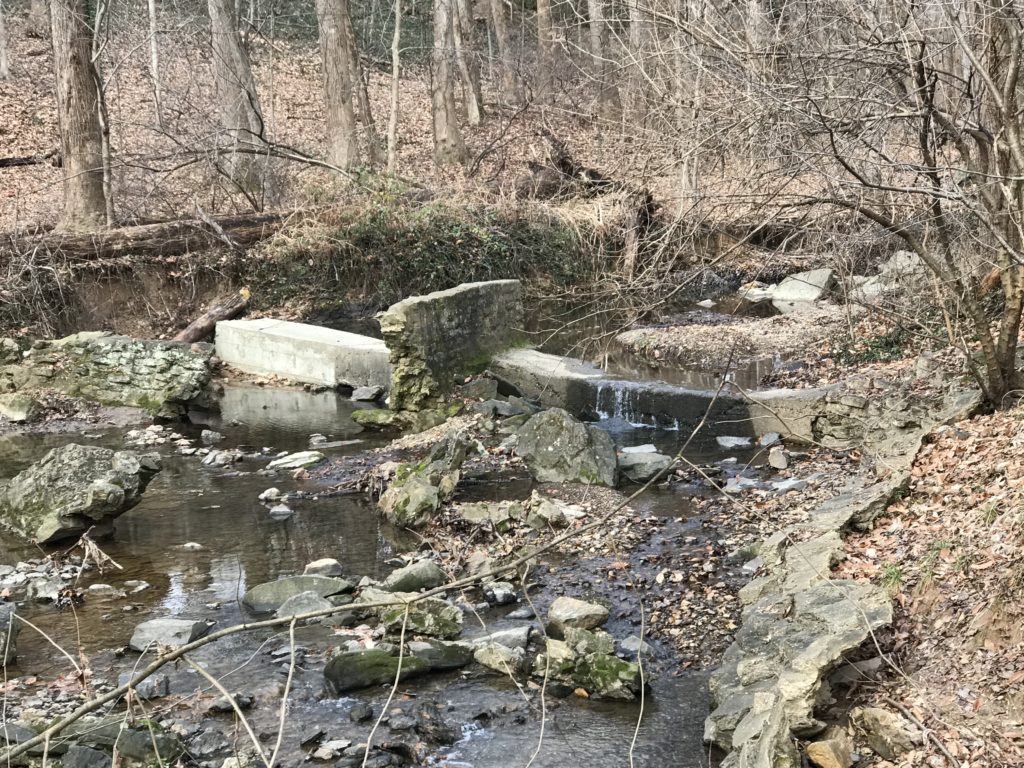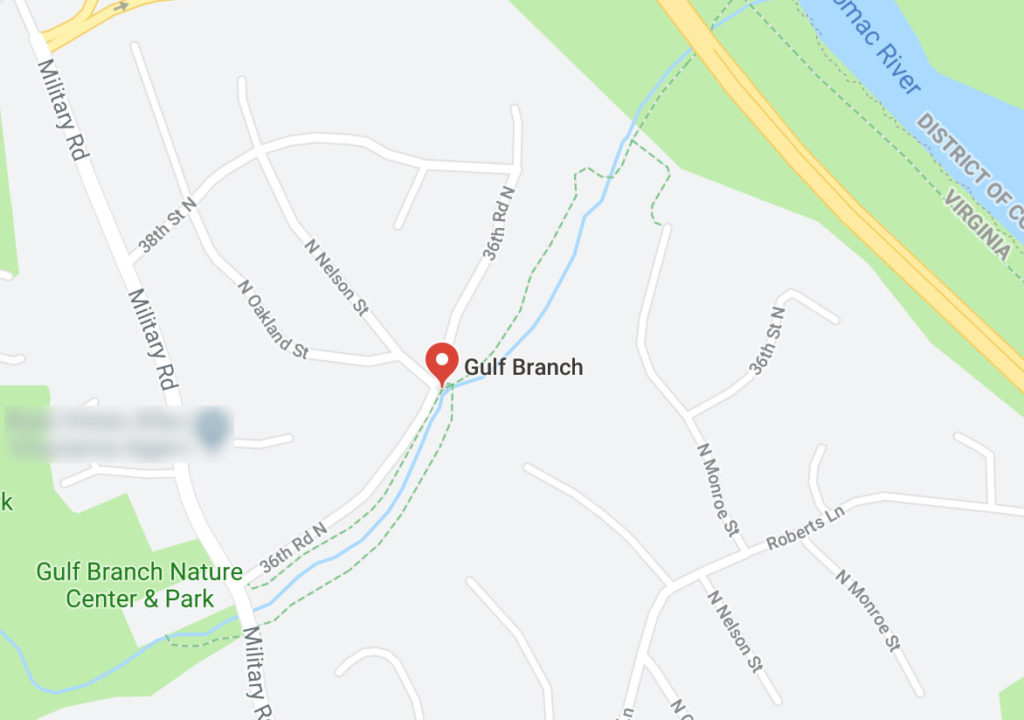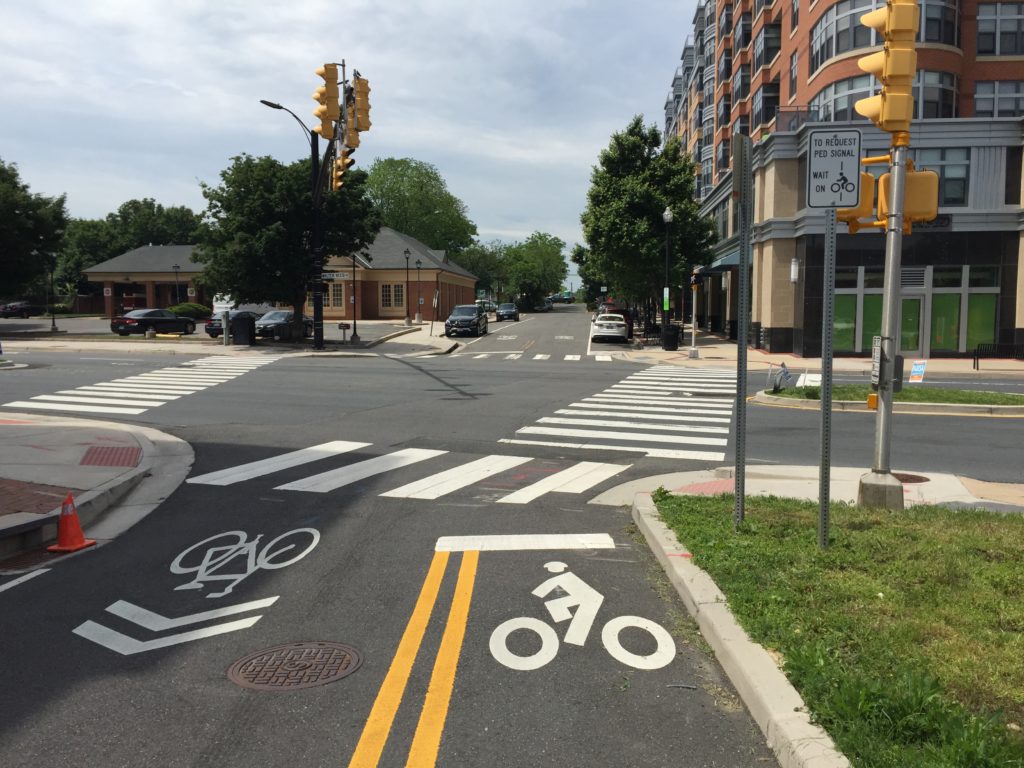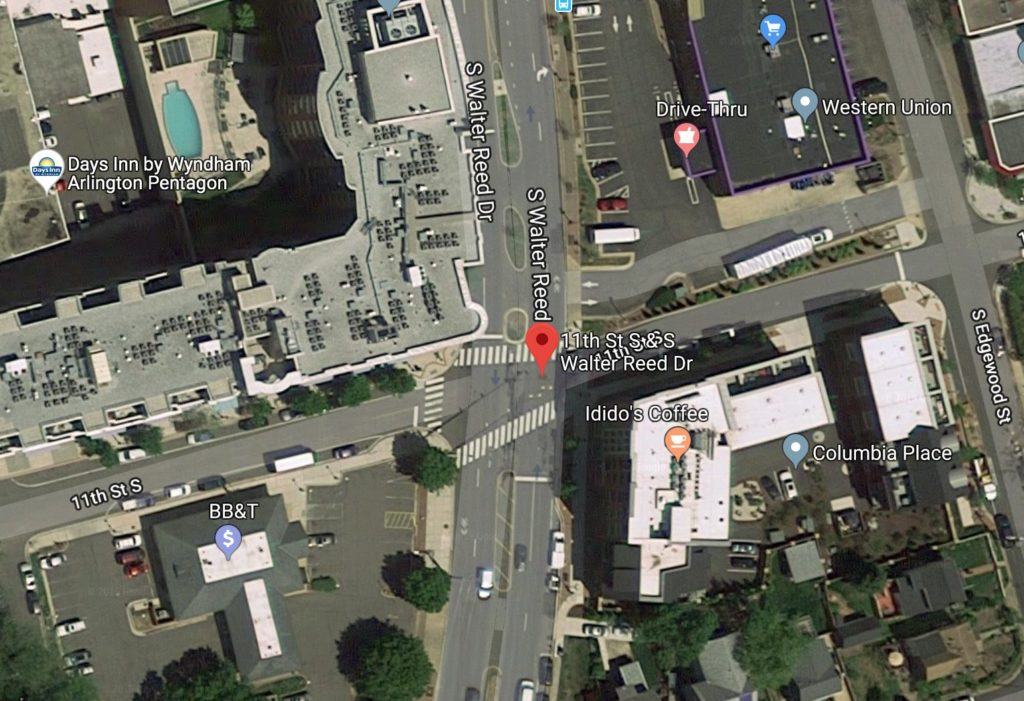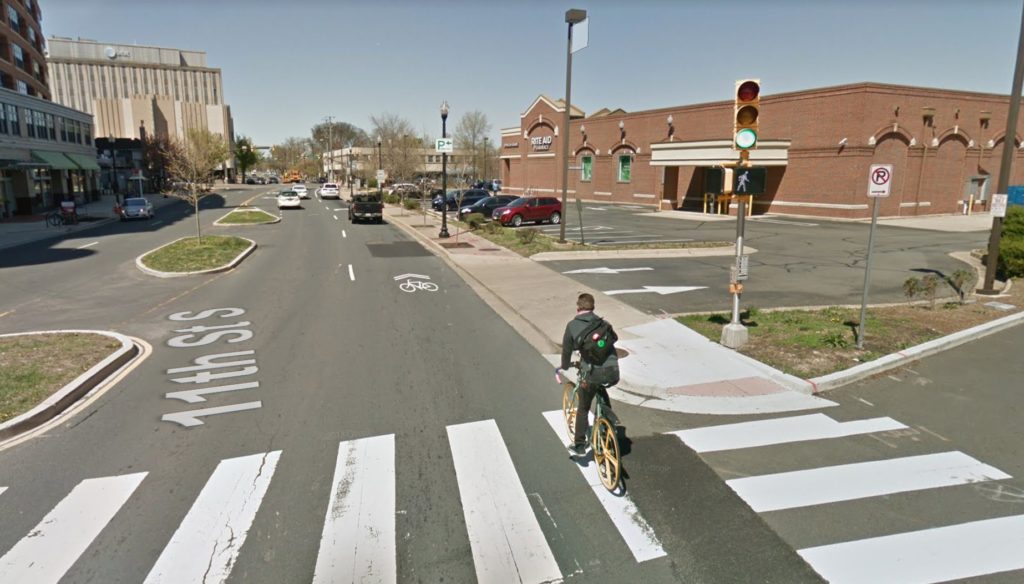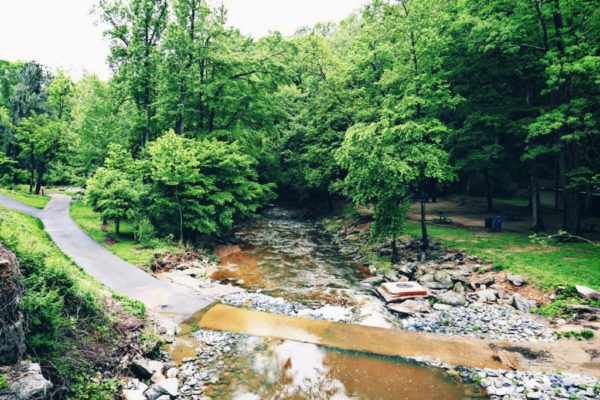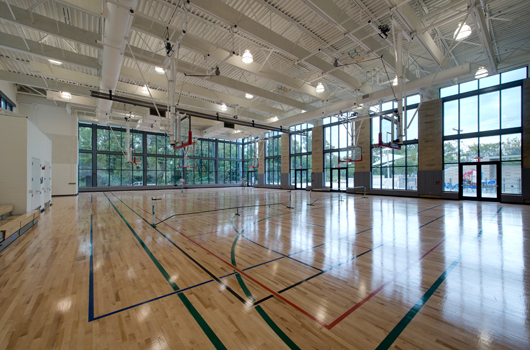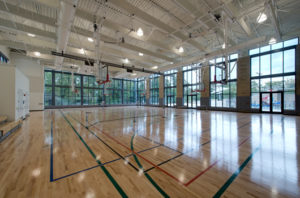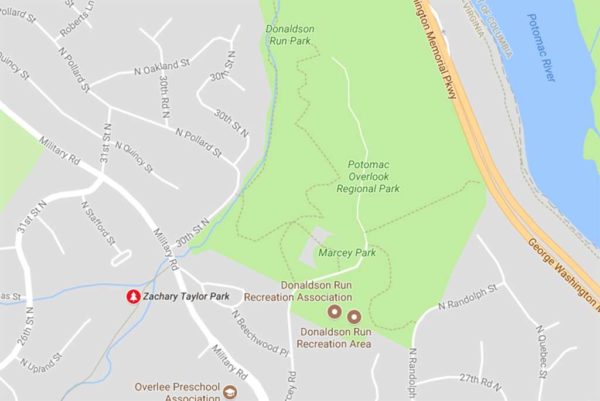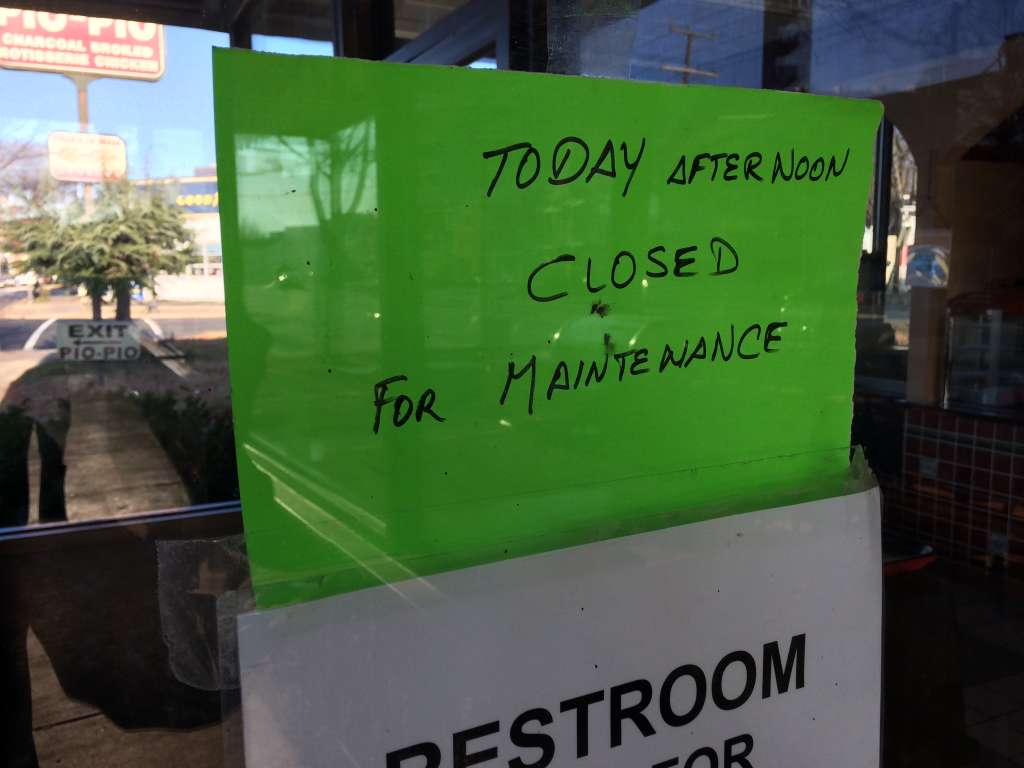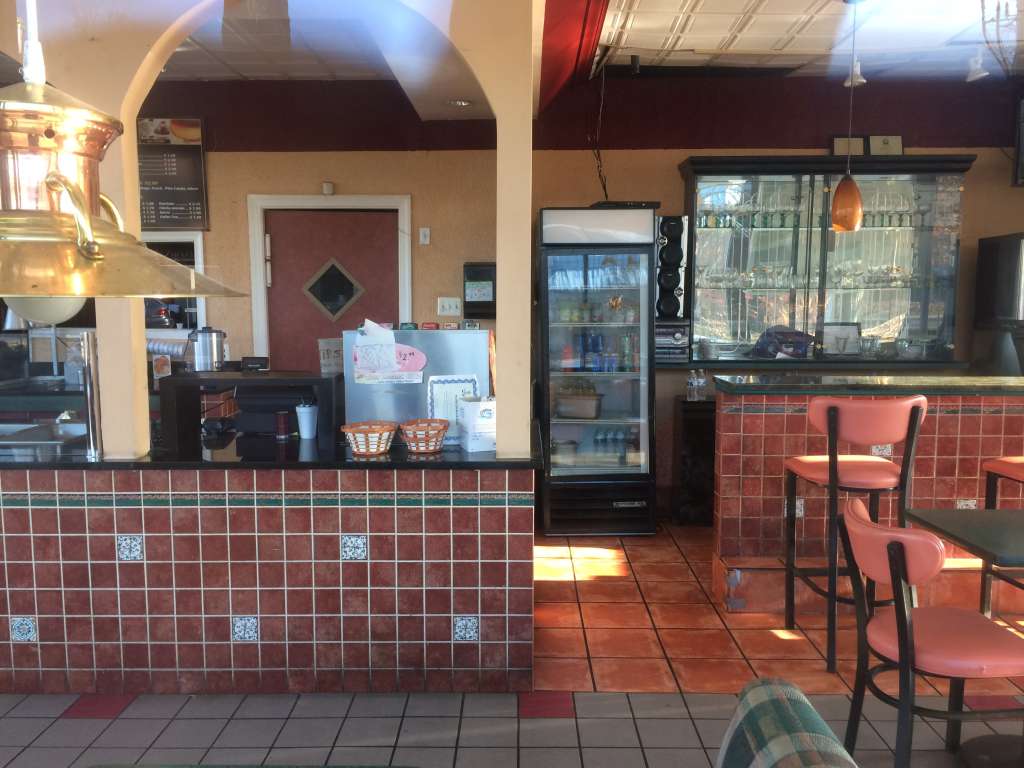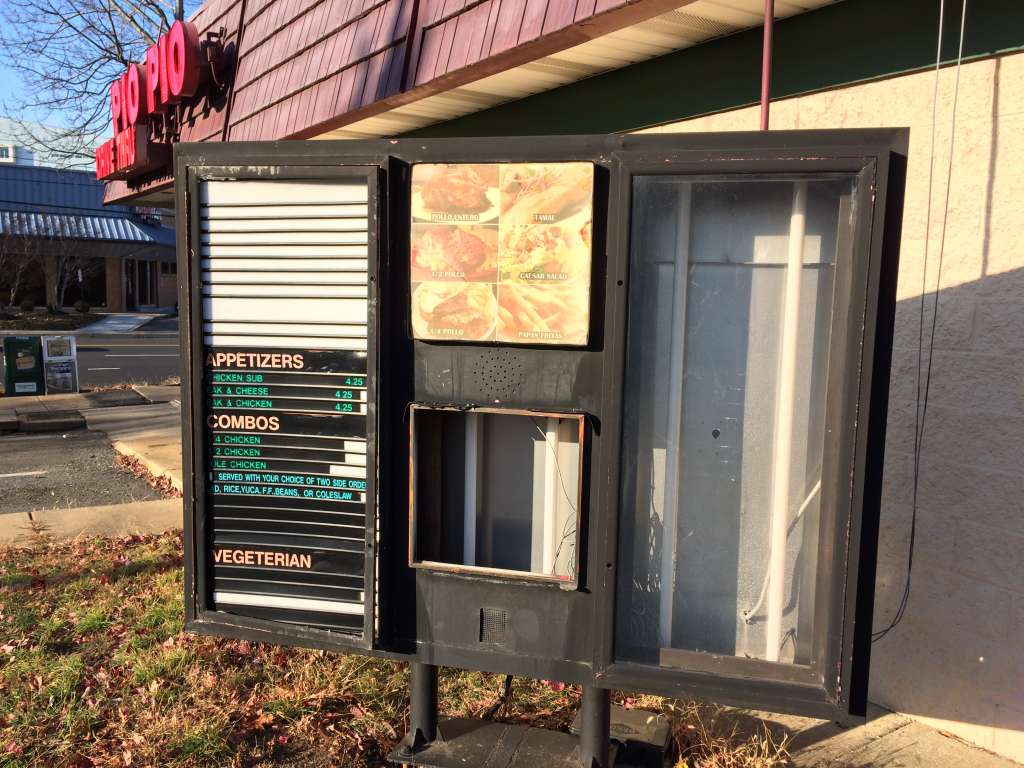(Update 4:25 p.m.) Metro is fast-tracking repairs on the Yellow Line bridge and tunnels.
The transit agency is preparing for a major capital project to rehab the 3,000-foot-long Yellow Line bridge that crosses over the Potomac River, connecting D.C. to Arlington.
Upgrades will also be made to the fire suppression system on the bridge which is, as the release notes, “beyond its useful life.” Additionally, the steel-lined tunnels connecting the Pentagon Metro station to the bridge and the bridge to L’Enfant Plaza station will be repaired.
Both the bridge and tunnels date to Metro’s original construction more than 40 years ago.
“Metro is investing in an aggressive capital campaign to rehabilitate and repair elevated structures, and the Yellow Line Bridge is the top structural priority providing the region with a vital transportation link across the Potomac,” Metro’s Executive Vice President of Capital Program Delivery Laura K. Mason writes in the press release. “Advancing this project quickly is good for our customers, and will allow Metro to utilize this process on future projects to more quickly address critical safety needs of other elevated structures.”
In order to get this done quicker, Metro is hiring a Construction Manager at Risk (CMAR) to coordinate the design process, pricing, and construction concurrently, allowing the project to move quicker.
Proposals are due April 7. The bulk of the work will take place in 2022.
A Metro spokesperson tells ARLnow that without a CMAR, the project would have taken a year longer and been completed in December 2023. Construction is schedule to be wrapped up by the end of 2022, Metro confirms.
The project is part of Metro’s 10-year, $15 billion Capital Improvement Program. A Metro spokesperson was unable to provide the exact cost for this particular project.
Word of the upcoming project comes in the midst of a budget battle that could result in the closing of 22 stations come January 2022, including four stations in Arlington.
The bridge was first constructed in the 1970s. It’s supported by box-girder spans and piers which are showing excessive wear and corrosion. As for the tunnels, decades of water leakage and underground moisture have eroded the steel-lined tunnels.
Maintenance and leak mitigation is ongoing, but “long-term repairs are necessary now to avoid structural failure in the future,” reads the release.
The state of the Yellow Line Bridge and the tunnels has been a continued source of concern in recent years.
Speed restrictions were put in place several summers ago due to track conditions. The tunnels started leaking in 2017, forcing single-tracking. In 2018, the entire Yellow Line was shut down for several weeks for needed renovation work on the bridge.
And, in 2015, the Yellow Line tunnel between the bridge and L’Enfant Plaza station was the site of a deadly smoke incident that left one woman dead and dozens of commuters hospitalized.
Photo via Flickr/John Sonderman


